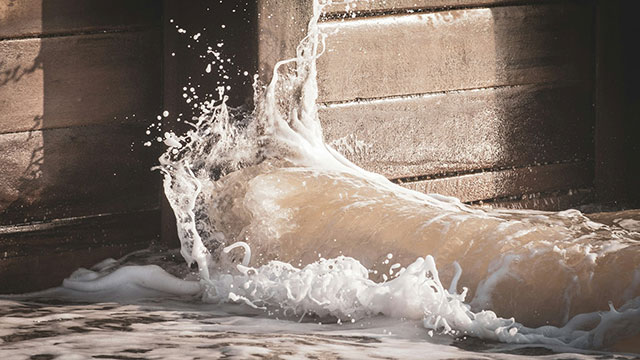The current rate of rising sea levels is manageable, and countries and authorities are already taking proactive measures to address the issue

For interview requests, click here
One of the more exaggerated predictions made by the climate crisis lobby is that human-caused global warming is leading to a significant rise in sea levels. While there is a small kernel of truth to rising sea levels, it has been blown out of all proportion.
The most extreme prediction in the recent sixth report of the Intergovernmental Panel on Climate Change (IPCC) came from a team of 13 experts led by Robert DeCo
nto, professor of Geosciences at the University of Massachusetts. They suggested that a vulnerable large icefield in Antarctica could collapse by the year 2300, triggering a cascade effect that could cause sea levels to rise by over 12 metres, which would be catastrophic for hundreds of millions of people living in coastal cities.
However, a recent study from Dartmouth College, using improved physics models related to glacier retreats, has shown that such a scenario would be impossible. This highlights the importance of exercising caution, even wariness, when considering what the IPCC refers to as ‘low probability’ events in the far future.
 Photo by Ben Wicks |
| Recommended |
| Why microbes could be part of climate solutions
|
| Peak Oil is dead: Technology shatters the era of scarcity
|
| Jasper: From pastoral paradise to post-apocalyptic nightmare
|
According to the Wood’s Hole Oceanographic Institution, the actual rate of sea level rise in recent decades is about three millimetres per year. While this rise will accumulate over time, in 33 years it would only amount to an increase of about 10 centimetres (approximately four inches). The World Climate Research Programme has noted that the most likely sea level rise estimates from the IPCC range between 1.3 and 1.6 metres by 2100. While significant, this increase is not considered catastrophic.
It strains credulity that authorities responsible for safeguarding coasts and low-lying islands from destructive storm surges, exacerbated by rising sea levels, would not undertake mitigation measures. In fact, such measures are currently being planned, with some projects already underway. These include restoring coral reefs in tropical areas and planting mangrove buffer zones in shallow waters to help protect against the impacts of rising seas.
In other areas, mitigation measures include installing breakwaters, creating artificial reefs, building marshlands, and planting seagrasses. Other measures include raising or strengthening buildings, roads, and sidewalks and expanding sewer capacity and other infrastructure.
Rising sea levels pose a serious threat to low-lying islands. Given the urgency of the situation, it is odd that relatively little attention is paid to what is actually happening. In reality, many of these island nations are being proactive, taking steps to manage the risks of flooding and the salinization of their freshwater supplies.
For example, Tuvalu’s government, in collaboration with the UN Development Programme, has developed sustainable, eco-friendly coastal barriers and raised 7.3 hectares of land to withstand projected sea level rise by 2100. Other island nations, like the Maldives, are undertaking similar initiatives. Few nations or territories are passively waiting to “drown”; most are actively working to protect themselves from the impacts of rising seas.
A study by Arthur Webb, an expert on coastal processes, and Paul Kench of Auckland University indicated that just 14 percent of islands in the central Pacific experienced significant erosion. Some of them grew, by the process of accretion by wave action.
Given these findings, and proactive measures resembling those of Tuvalu, it may be unnecessary to make heroic efforts to dredge up or import material to build up vulnerable islands or atolls.
To sum up: the current slow sea level rise is a very manageable issue.
Ian Madsen is the Senior Policy Analyst at the Frontier Centre for Public Policy.
The opinions expressed by our columnists and contributors are theirs alone and do not inherently or expressly reflect the views of our publication.
© Troy Media
Troy Media is an editorial content provider to media outlets and its own hosted community news outlets across Canada.

